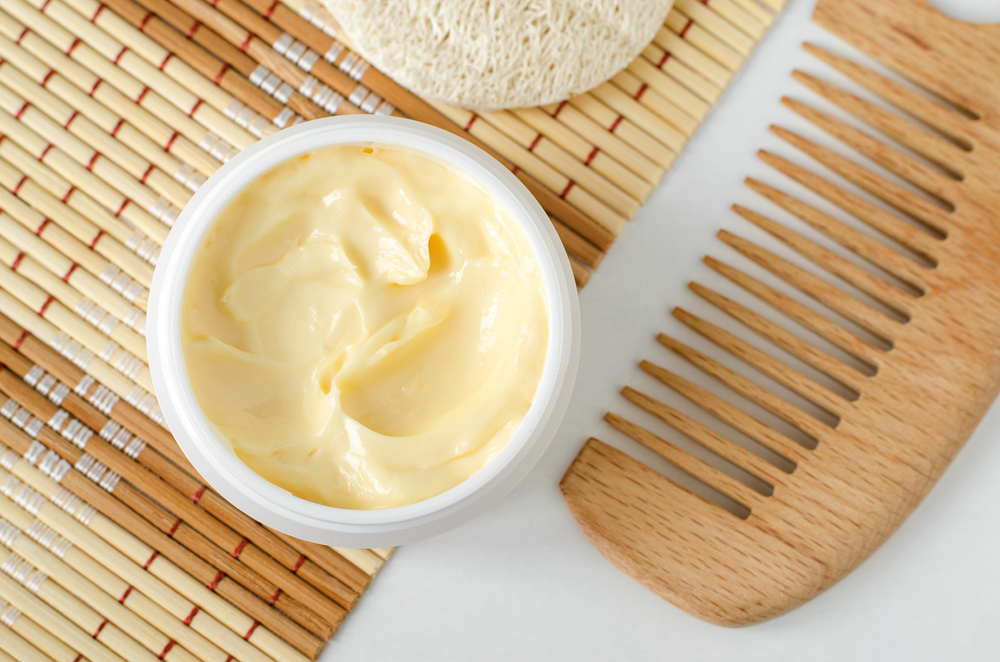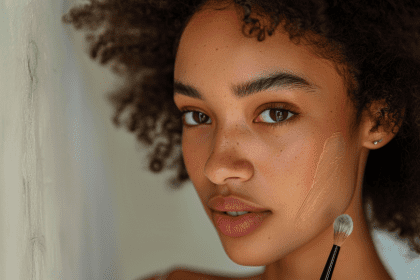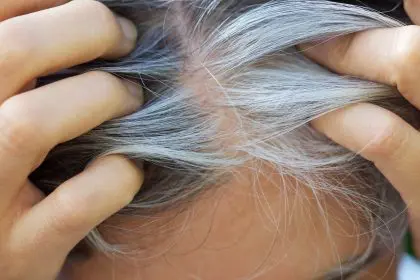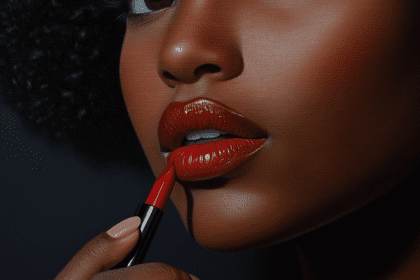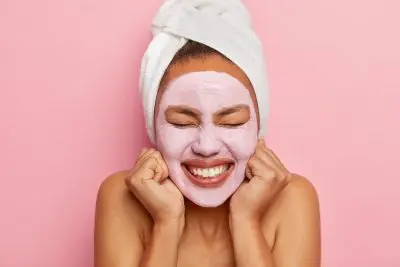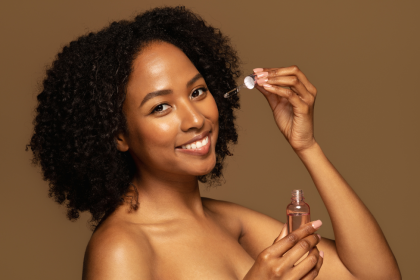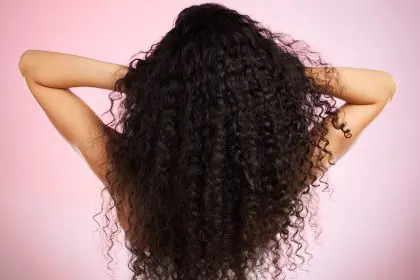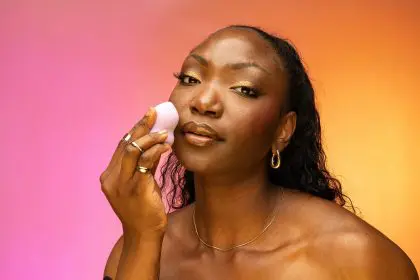That frustrating cycle of trying every trendy hair mask and miracle conditioner might continue endlessly if you’re missing a fundamental element in your hair care routine. While moisture gets most of the attention in beauty marketing, protein plays an equally crucial but often overlooked role in maintaining strong, resilient hair.
Your strands are actually about 91% protein by nature, composed primarily of a sturdy protein called keratin that gives hair its structure and strength. When this protein foundation becomes damaged through heat styling, chemical treatments, or environmental stressors, no amount of moisture can fully restore it. Understanding when your hair needs protein and how to provide it appropriately could transform your hair care results far more effectively than that pricey new conditioner promising miracles.
The protein-moisture relationship nobody explains properly
The relationship between protein and moisture in healthy hair resembles a carefully balanced seesaw. Both elements are essential, but excesses or deficiencies in either direction lead to problems that many people misinterpret and mistreat.
Hair naturally consists of protein structures arranged in overlapping cuticles that protect the inner cortex. These protein layers create pathways for water molecules to move in and out of the hair shaft. When protein becomes damaged or depleted, these pathways lose their integrity, making it difficult for hair to retain moisture properly. The result often appears as dry, lifeless hair that paradoxically won’t respond well to moisturizing treatments.
Conversely, when hair receives excessive moisture without adequate protein support, the strands become overly flexible and weak. This condition, sometimes called hygral fatigue, occurs when hair repeatedly swells with moisture and then contracts as it dries, gradually weakening the internal structure. Without sufficient protein to maintain structural integrity, moisture-overloaded hair feels soft but lacks elasticity and breaks easily.
Most commercial hair products focus heavily on moisture delivery while neglecting protein needs. This imbalanced approach stems partly from the immediate gratification moisture provides, as protein benefits typically develop more gradually. Moisture instantly makes hair feel softer and more manageable, while protein strengthens and fortifies over time with less immediate sensory feedback.
Understanding this interdependence explains why some people find their hair actually worsens when using rich conditioners or hair masks. Without adequate protein to help retain that moisture, adding more hydration might temporarily improve feel but ultimately exacerbate underlying structural weaknesses. Similarly, applying protein to moisture-deficient hair without addressing hydration needs creates stiffness and brittleness.
The protein-moisture balance varies significantly between hair types and textures. Coarser, more textured hair typically requires more moisture relative to protein, while finer hair often needs more frequent protein treatments to maintain strength. This variation explains why your friend’s holy grail product might be completely wrong for your hair, even if you share similar concerns like frizz or breakage.
The surprising signs your hair is protein deficient
Recognizing protein deficiency requires looking beyond obvious damage to subtle changes in how your hair behaves. These indicators often appear before visible breakage occurs, providing an opportunity for preventive intervention.
Excessive elasticity serves as perhaps the most reliable indicator of protein deficiency. Healthy hair should stretch slightly when wet and return to its original length when released. Protein-deficient hair stretches much further before returning, sometimes not returning to its original form at all. This excessive elasticity indicates weakened internal keratin structures that can no longer maintain proper tension. To test this, gently stretch a wet strand between your fingers, observing how far it extends before breaking or returning to its original length.
A sudden increase in porosity often signals protein deficiency, particularly when it occurs after chemical treatments or heat styling. High porosity hair absorbs water quickly but also loses it rapidly, creating a frustrating cycle of hair that gets wet instantly in the shower but dries out hours later. This occurs because damaged protein structures create gaps in the cuticle layer that allow moisture to move too freely in and out of the hair shaft.
Diminished curl pattern or loss of wave sometimes indicates protein deficiency, especially when it occurs alongside increased frizz. The internal protein structure helps hair maintain its natural pattern, whether straight, wavy, or curly. When this structure weakens, hair loses its ability to form and hold its natural shape. Curly hair might appear looser and less defined, while naturally wavy hair might seem suddenly straighter but frizzier.
A soft, mushy texture when wet suggests serious protein deficiency. Healthy hair maintains some tension and structure even when saturated with water. When wet hair feels unusually soft, almost gelatinous, or takes significantly longer to dry than usual, protein structures have likely become compromised. This texture change often precedes breakage by weeks or months, providing an early warning sign.
Increased tangling despite regular conditioning frequently indicates protein issues rather than dryness. The raised, damaged cuticle layers catch on each other more readily, creating knots and tangles that seem resistant to normal conditioning treatments. This tangling often concentrates at the most protein-depleted areas, typically the older, more damaged ends of the hair.
Reduced effectiveness of styling products sometimes reveals underlying protein deficiency. When hair suddenly stops responding to familiar styling products despite using the same application techniques, the hair’s ability to interact with product ingredients may have changed due to altered protein structures. This becomes particularly noticeable with hold products like gels and mousses, which rely on binding to the hair’s protein structure.
Who needs protein treatments most urgently
While all hair contains and occasionally needs protein, certain hair situations create significantly higher protein requirements that often go unrecognized and unaddressed.
Color-treated hair experiences protein loss during the coloring process as chemicals necessarily alter the hair’s structure to deposit or remove pigment. Each color application potentially removes some of the hair’s natural protein, creating a cumulative deficit over time. This explains why hair often becomes increasingly damaged with repeated coloring despite using high-quality products. Regular protein treatments between color appointments help replace what chemical processing removes.
Heat styled hair suffers microscopic protein damage with each application of high temperatures. Straighteners, curling irons, and even blow dryers operating above 350°F cause protein structures to denature and weaken. This damage accumulates gradually, often becoming noticeable only after months of styling. For those unwilling to abandon heat styling, protein treatments provide essential structural repair to counteract this ongoing damage.
Chemically straightened or permed hair undergoes significant protein restructuring during treatment. These processes intentionally break and reform protein bonds to create new hair shapes, inevitably causing some protein loss in the process. The newly created bonds remain vulnerable for several weeks after treatment, making proper protein maintenance essential for longevity of these services.
Bleached hair experiences the most severe protein loss of any chemical treatment. The process of lifting pigment necessarily damages the hair’s protein structure, sometimes removing as much as 25% of the strand’s natural protein content with a single treatment. Multiple bleaching sessions compound this damage, creating chronic protein deficiency that requires ongoing intervention to prevent breakage.
Fine hair generally contains less protein by volume than coarser textures, simply due to having smaller diameter strands. This reduced protein content makes fine hair particularly vulnerable to damage from everyday stressors that might not noticeably affect thicker hair types. Regular, lightweight protein treatments often make the difference between fine hair that breaks constantly and fine hair that maintains length and fullness.
Aging hair undergoes structural changes as protein production naturally decreases with age. Just as collagen production diminishes in skin, keratin formation also becomes less efficient over time. This age-related protein deficit often contributes to the textural changes many people notice in their hair as they age, including increased brittleness and reduced thickness. Topical protein treatments help compensate for these natural biological changes.
The protein treatment spectrum explained
Protein treatments for hair range from gentle daily maintenance to intensive reconstructive therapy. Understanding this spectrum helps match the appropriate treatment to your hair’s specific needs without risking protein overload.
Everyday protein maintenance comes from leave-in conditioners and styling products containing hydrolyzed proteins like silk, wheat, or soy protein. These smaller protein molecules coat the hair surface and fill minor gaps in the cuticle without dramatically changing hair texture. These products typically contain protein in the middle or toward the end of the ingredient list, indicating moderate concentration appropriate for regular use.
Light protein treatments, sometimes called protein packs, contain slightly higher concentrations of small to medium-sized protein molecules that penetrate the cuticle more effectively. These treatments typically require 5-15 minutes of contact time and produce subtle strengthening effects without drastically changing hair texture. They work well as preventive maintenance for color-treated or heat-styled hair, ideally used every 2-3 weeks.
Moderate reconstructive treatments contain higher concentrations of various protein sizes, often combined with amino acids and bond-building ingredients. These products typically call for 15-30 minutes under heat for maximum penetration and provide noticeable strengthening for damaged hair. Most hair benefits from these treatments monthly or bimonthly, depending on damage levels and styling habits.
Intensive protein reconstruction, often called protein fillers or emergency treatments, contains the highest concentration of proteins, sometimes including intact keratin proteins similar to the hair’s natural structure. These treatments dramatically alter hair texture, making it firmer and more resilient immediately after application. Due to their strength, these intensive treatments should be used only when hair shows severe protein deficiency, typically at most once monthly for extremely damaged hair.
DIY protein options include ingredients like gelatin, eggs, or yogurt, which contain proteins that temporarily adhere to the hair shaft. While less precisely formulated than commercial treatments, these kitchen remedies provide genuine protein benefits, particularly when combined with gentle heat. The effectiveness of DIY treatments varies considerably based on preparation methods and your hair’s specific needs.
The newest generation of protein treatments focuses on bond rebuilding rather than simply coating damaged areas. These treatments work at the molecular level to reform broken disulfide bonds within the hair’s protein structure. While technically not protein treatments themselves, these products support the hair’s existing protein structure by reconnecting broken bonds, creating synergistic benefits when used in rotation with traditional protein treatments.
Avoiding the dreaded protein overload
While addressing protein deficiency brings remarkable benefits, excessive protein creates its own problems that sometimes mimic the very issues you’re trying to solve. Understanding the signs and solutions for protein overload helps maintain proper balance.
Stiffness and straw-like texture provide the most obvious indicators of protein excess. Hair feels rigid and loses natural movement, sometimes accompanied by a distinctive “squeak” when rubbed between fingers. This stiffness occurs because excessive protein molecules create a rigid coating around hair strands that prevents normal flexibility and movement. The sensation differs from ordinary dryness by not improving with moisturizing treatments.
Brittleness and increased breakage paradoxically occur with both protein deficiency and excess, creating potential confusion. The difference lies in the breaking pattern, protein overloaded hair tends to snap suddenly with minimal stretching, while protein-deficient hair stretches significantly before breaking. This brittleness results from reduced elasticity as excessive protein prevents the normal give-and-take hair requires to withstand manipulation.
Dullness despite clarifying treatments sometimes indicates protein buildup. The uneven accumulation of protein molecules on the hair surface disrupts light reflection, creating a matte appearance resistant to conventional shine-enhancing products. Unlike typical product buildup that clarifying shampoos remove effectively, protein buildup often requires dedicated treatments to dissolve and remove.
Resistance to water represents another reliable indicator of protein excess. Protein-overloaded hair typically takes longer to become fully saturated in the shower and feels resistant to penetration by conditioners and treatments. This water resistance occurs because accumulated protein creates a hydrophobic barrier on the hair surface that repels moisture rather than absorbing it.
Diagnosing true protein overload requires eliminating other potential causes of similar symptoms. Hard water mineral buildup, silicone accumulation, and certain styling product residues can create effects resembling protein excess. A clarifying shampoo treatment followed by a moisture-only deep conditioner helps distinguish genuine protein overload from these common mimickers.
Correcting protein excess requires temporarily eliminating all protein-containing products while focusing on moisture restoration. Deep conditioning treatments containing rich emollients help restore flexibility, while gentle clarifying treatments remove accumulated protein from the hair surface. Most hair recovers from protein overload within 2-3 weeks of appropriate treatment, though severely overloaded hair may require longer rehabilitation.
Finding your personal protein balance
Developing a sustainable approach to hair protein requires personalized experimentation rather than following generic recommendations. These strategies help identify your hair’s unique protein needs.
Start with product ingredient analysis, examining your current hair care products for protein content. Ingredients like hydrolyzed keratin, silk protein, collagen, amino acids, and peptides indicate protein presence. Their position in the ingredient list suggests concentration level, with higher placements indicating stronger protein content. This audit often reveals unintentional protein layering or deficiencies in your existing routine.
The wet stretch test provides a simple home assessment of your current protein-moisture balance. Take a few strands of clean, wet hair and gently stretch them between your fingers. Healthy hair stretches slightly and returns to its original length when released. Excessive stretch suggests protein deficiency, while minimal stretch before breaking indicates potential protein excess or extreme dryness. Performing this test regularly helps track changes in your hair’s needs over time.
Seasonal adjustments often prove necessary as environmental conditions affect protein needs. Many people require more frequent protein treatments during summer months when UV exposure, swimming, and increased washing create additional protein depletion. Conversely, winter conditions typically necessitate more moisture relative to protein as indoor heating systems reduce ambient humidity.
Treatment rotation strategies prevent both deficiency and overload by alternating protein and moisture treatments. Rather than using protein weekly, experiment with different intervals based on your hair’s response. Many people find success with a protein treatment followed by 2-3 moisture-focused treatments before reintroducing protein. This rotation maintains balance while addressing both fundamental hair needs.
Sectional treatment sometimes proves necessary for hair with different needs from roots to ends. Newer growth close to the scalp typically requires less protein than older, more damaged ends. Applying protein treatments primarily to mid-lengths and ends while focusing moisturizing treatments throughout creates customized care that addresses varying needs along the hair shaft.
Professional consultation provides valuable guidance for those struggling to determine their optimal protein balance. Experienced stylists often recognize subtle indicators of protein imbalance through visual and tactile assessment. Their professional perspective can help identify patterns you might miss through self-evaluation, particularly if you’ve become accustomed to your hair’s current condition.
By understanding the fundamental role protein plays in hair health and learning to recognize your hair’s specific signals, you can move beyond the endless cycle of product disappointment toward truly effective hair care. The solution to your most persistent hair problems might not be that exciting new launch with the compelling marketing, but rather the proper balance of the structural protein your hair has been quietly lacking all along.

